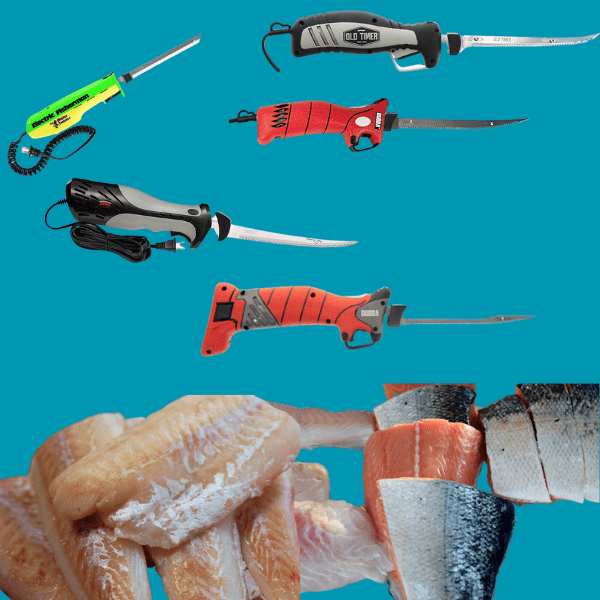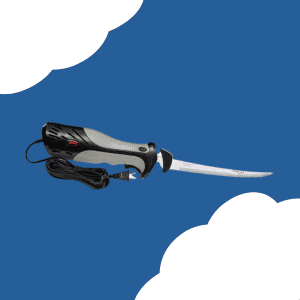If you are a fisherman or a seafood enthusiast, an electric fillet knife is an essential tool for you. An electric fillet knife is designed to make the process of filleting fish faster, easier, and more efficient than using a traditional knife. This article will show you how to use an electric fillet knife to fillet fish like a pro.
Are you looking for a comprehensive guide on electric fillet knives? Look no further than our Electric Fillet Knives Everything You Need to Know About!
Steps to Using an Electric Fillet Knife
Using an electric fillet knife is relatively straightforward. Here are the steps to follow:
- Step 1: Prepare the Fish
- Step 2: Make the First Cut
- Step 3: Remove the Fillet
- Step 4: Repeat the Process
- Step 5: Remove the Skin
1 Prepare the fish
Before using the electric fillet knife, prepare the fish properly. Start by placing the fish on a clean, flat surface and rinse it with cold water. Then, remove the scales using a scaling tool or the back of a knife. Cut the gills and insert your finger to remove the guts and organs. Rinse the cavity with cold water and dry the fish with a paper towel.
Once the fish is cleaned correctly, you can start filleting it with the electric fillet knife. It is important to note that different types of fish may require other filleting techniques, so it is a good idea to research the specific fish you are working with beforehand.
When using an electric fillet knife, follow the manufacturer’s instructions and take proper safety precautions to avoid injury. Use the appropriate blade size for the fish you are filleting, and keep the blade sharp for smoother and more precise cuts.
You can achieve clean and efficient fillets with minimal effort by adequately preparing the fish and correctly using the electric fillet knife.
2 Make the first cut
After preparing the fish, it’s time to make the first cut with the electric fillet knife. Hold the fish firmly and the electric fillet knife with the other hand. Position the blade at the top of the fish’s head, just behind the gills.
Make a shallow incision down the length of the fish’s spine, following the curve of the head. Apply gentle pressure to the blade and let the electric knife do the work. Avoid cutting too deeply or quickly, as this can damage the meat and make it difficult to remove the bones.
Remember to take proper safety precautions when using an electric fillet knife, such as wearing protective gloves and goggles. In addition, always use the appropriate blade size for the fish you are filleting and keep the blade sharp for smoother and more precise cuts.
By following these tips, you can make the first cut and subsequent cuts easily and precisely, resulting in perfectly filleted fish every time.
3 Remove the Fillet
After making the first cut, turn the knife and insert it between the flesh and bones. Use a back-and-forth motion to cut through the flesh, starting from the tail towards the head. Cut along the rib bones until you reach the end of the fillet.
4 Repeat the Process
Repeat the same process on the other side of the fish to remove the second fillet.
5 Remove the Skin
Once you have removed the fillet from the body, it’s time to remove the skin. There are different techniques to remove the skin, but one of the most effective and efficient methods when using an electric fillet knife is the “pin-bone method.”
Start by placing the fillet skin-side down on a flat surface, with the tail end facing away from you. Next, locate the row of small, thin bones called “pin bones” that run down the center of the fillet.
Using a pair of pliers or tweezers, grip the first pin bone firmly and gently pull it out towards the tail end of the fillet. Continue removing the pin bones one by one, working your way down the length of the fillet.
Once you have removed all the pin bones, make a shallow incision between the meat and the skin at the tail end of the fillet. Hold the skin firmly with one hand and the electric fillet knife with the other. Then, with gentle pressure, make a back-and-forth sawing motion to separate the skin from the meat.
Use your other hand to gently pull the skin away from the meat as you cut. The skin should come out easily if you have removed all the pin bones correctly. Be sure to remove any remaining pin bones or bones with a pair of tweezers or pliers.
Repeat the process on the other side of the fish to remove the second fillet.
When removing the skin, it is essential to use gentle pressure and take your time to avoid damaging the meat. If the skin does not come away easily, you may need to make a deeper cut or adjust the angle of the blade.
Remember to take proper safety precautions when using an electric fillet knife, such as wearing protective gloves and goggles. In addition, always use the appropriate blade size for the fish you are filleting, and keep the blade sharp for smoother and more precise cuts.
By following these tips, you can easily and precisely remove the skin from the fillet, resulting in perfectly filleted fish every time.
Tips for Using an Electric Fillet Knife
Here are some tips to help you use an electric fillet knife more efficiently:
- Keep the blade sharp to avoid tearing the flesh and bones of the fish.
- Use the right blade size for the type and size of fish you intend to fillet.
- Use a flexible blade for delicate fish species.
- Hold the fish firmly to avoid slipping and accidents.
- Use a stable cutting board to avoid accidents.
Conclusion
An electric fillet knife is a convenient and efficient way to fillet fish. You can use an electric fillet knife to fillet fish like a pro with proper preparation, safety precautions, and techniques. Follow the steps outlined in this article and the tips provided to improve your filleting skills and make the process more enjoyable.



